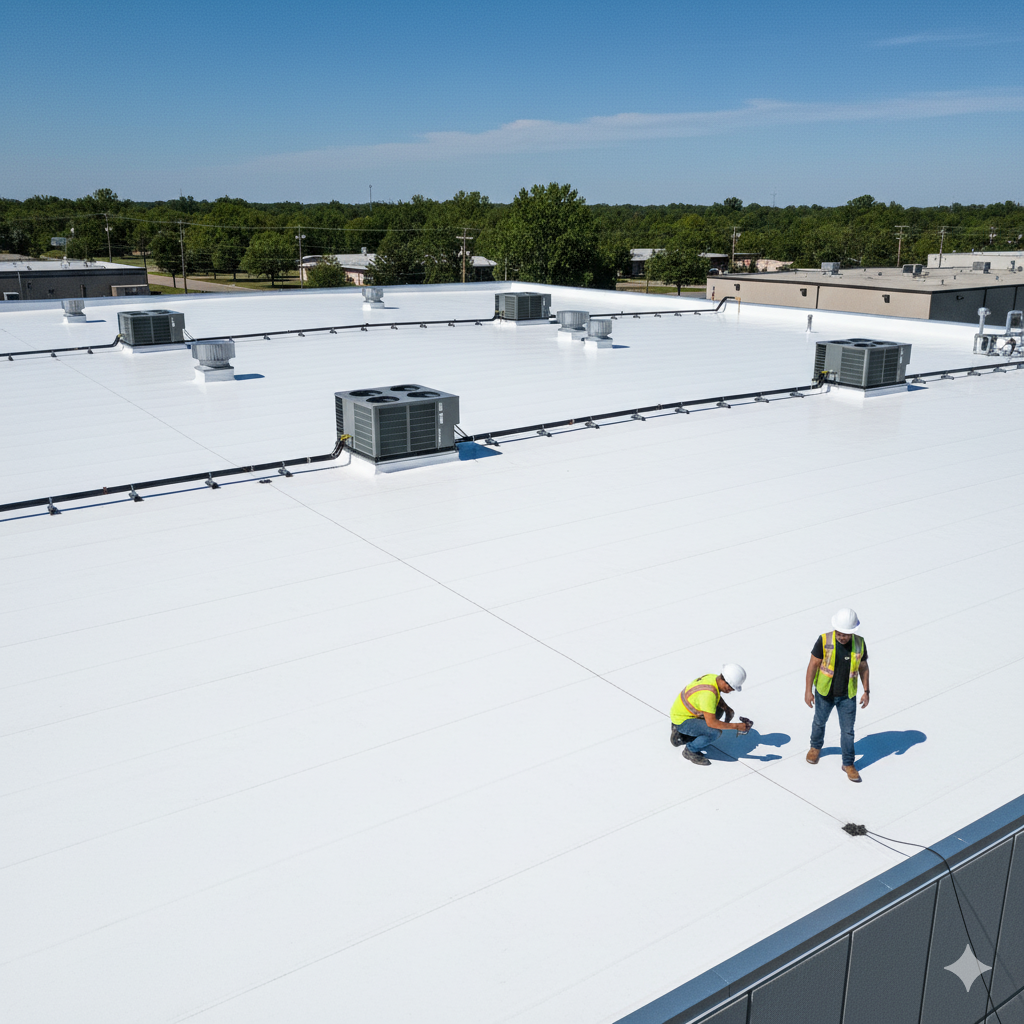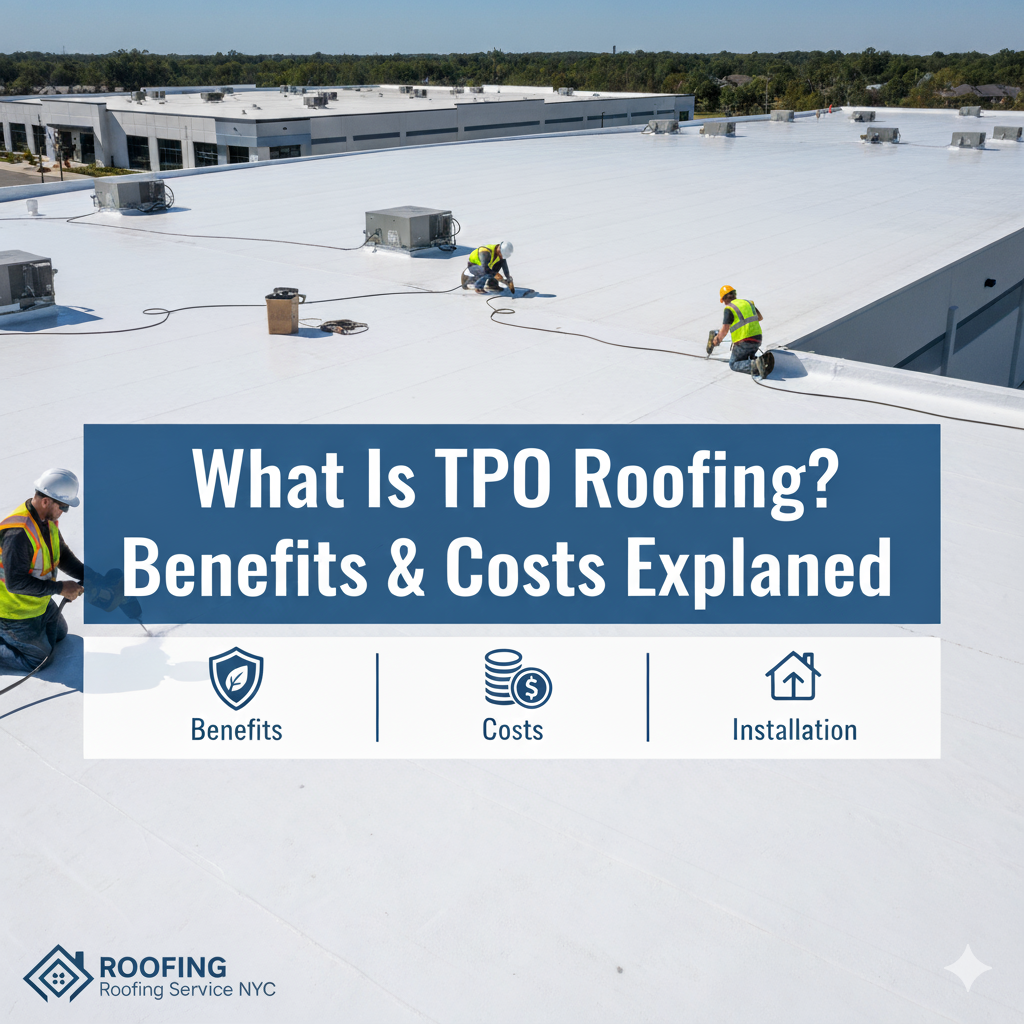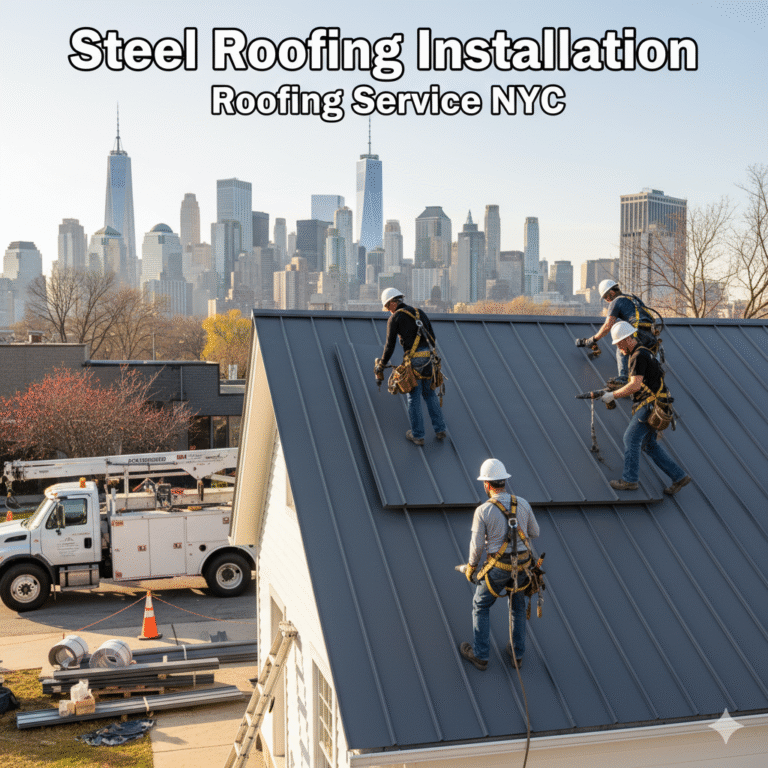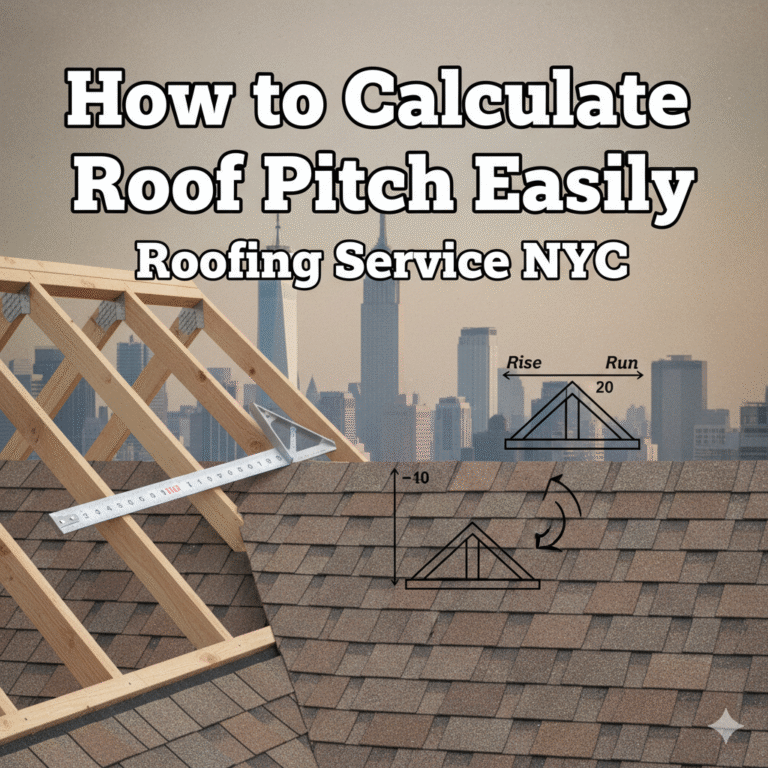When it comes to finding a durable, energy-efficient, and cost-effective roofing option, many property owners are turning to TPO roofing. But what is TPO roofing exactly, and why has it become so popular in both commercial and residential roofing projects? This advanced roofing solution offers exceptional performance in harsh weather conditions while helping reduce energy costs all year round.
At Roofing Service NYC, we specialize in providing high-quality roofing systems that are built to last. Whether you own a commercial property or a residential flat roof, understanding what TPO roofing is and how it works can help you make a smart, long-term investment in your building’s future.
Understanding TPO Roofing
TPO, or Thermoplastic Polyolefin, is a single-ply roofing membrane widely used for flat and low-slope roofs. It’s made from a blend of polypropylene and ethylene-propylene rubber, resulting in a strong yet flexible material that resists UV rays, chemicals, and punctures. This makes TPO one of the most reliable and long-lasting roofing materials available today.
What makes TPO roofing especially attractive is its reflective white surface, which helps keep buildings cooler by reflecting sunlight instead of absorbing heat. This energy efficiency translates to lower utility bills and a smaller carbon footprint, making TPO an ideal choice for eco-conscious property owners in urban areas like New York City.
Key Benefits of TPO Roofing
Exceptional Energy Efficiency
TPO roofing is engineered to reflect UV rays and reduce heat absorption. This helps maintain cooler interior temperatures during hot summer months, minimizing the need for air conditioning. As a result, property owners enjoy substantial energy savings over time.
At Roofing Service NYC, we often recommend TPOThermoplastic Polyolefin roofing for clients looking to meet energy efficiency standards or obtain LEED® certification for their buildings.
Durability and Weather Resistance
TPO roofing membranes are designed to withstand extreme weather conditions. They resist cracking, tearing, and impact damage, even in fluctuating temperatures. The heat-welded seams form a watertight barrier, offering superior protection against leaks.
Because of this durability, TPO roofing is an excellent solution for New York City’s challenging climate, where high winds and heavy rainfall are common.
Easy Maintenance and Repair
Another benefit of TPO roofing is its ease of maintenance. The smooth membrane surface resists dirt accumulation, and regular inspections can help detect minor issues early. Most small punctures or separations can be repaired quickly without replacing the entire roof.
Roofing Service NYC provides affordable maintenance programs to ensure your TPO roof remains strong, clean, and weather-resistant for decades.
Cost-Effective Installation
TPO roofing is cost-effective not just because of its material efficiency, but also because of its quick installation process. Its lightweight composition allows for faster installation, reducing labor costs.
This affordability makes TPO roofing a practical choice for both small businesses and large commercial facilities seeking long-term roofing solutions without overspending.
Eco-Friendly and Sustainable
As an environmentally conscious choice, TPO roofing is 100% recyclable and free from harmful chemicals like chlorine. It also helps reduce your building’s carbon footprint by improving thermal performance.
Many TPO systems meet Energy Star® requirements, making them both eco-friendly and cost-efficient options recommended by Roofing Service NYC.
TPO Roofing vs. Other Roofing Types
When comparing TPO roofing to alternatives like EPDM and PVC, TPO often offers the best balance of cost, performance, and longevity.
- TPO vs EPDM: EPDM (rubber roofing) is durable but absorbs heat. TPO, with its white reflective surface, is far more energy efficient.
- TPO vs PVC: PVC roofing is highly resistant to chemicals and oils but typically costs more. TPO delivers similar benefits at a more affordable price point.
For most property owners, Thermoplastic Polyolefin roofing strikes the perfect balance between affordability, durability, and environmental impact. (Wikipedia)
Installation Process of TPO Roofing
The installation process is straightforward but requires professional precision:
- Preparation: The old roofing material is removed, and the surface is cleaned and leveled.
- Insulation Layer: Insulation boards are laid down to improve energy efficiency.
- Membrane Placement: TPO sheets are rolled out and mechanically fastened or adhered to the surface.
- Heat Welding: Seams are heat-welded to form a watertight bond.
- Finishing Touches: Flashing and edge details are installed to ensure complete waterproofing.
Roofing Service NYC employs certified roofers who follow industry standards for a secure, long-lasting installation.
How Long Does TPO Roofing Last?
On average, Thermoplastic Polyolefin roofing lasts between 20 to 30 years, depending on the quality of materials and maintenance. Proper cleaning, periodic inspections, and timely repairs can extend its lifespan even further.
At Roofing Service NYC, we provide long-term warranties and maintenance plans to help our clients maximize their investment.

Conclusion
Thermoplastic Polyolefin roofing is a smart, modern, and eco-friendly solution for flat and low-slope roofs. It combines energy efficiency, durability, and cost savings into one system, making it ideal for both residential and commercial properties.
Whether you’re looking to install a new TPO roof or replace an existing one, Roofing Service NYC offers professional guidance, installation, and maintenance to ensure your roof performs at its best for decades.
FAQs About TPO Roofing
1. What is TPO roofing made of?
TPO roofing is composed of thermoplastic polyolefin, a blend of polypropylene and ethylene-propylene rubber. This gives it flexibility, strength, and resistance to UV rays.
2. How long does TPO roofing last?
With proper maintenance, TPO roofing can last 20 to 30 years, depending on environmental conditions and installation quality.
3. Is TPO roofing good for residential homes?
Yes. While it’s most common on commercial buildings, homeowners with flat or low-slope roofs can also benefit from TPO’s energy efficiency and durability.
4. Can Thermoplastic Polyolefin roofing be repaired?
Absolutely. Minor tears or punctures can be heat-welded or patched. Roofing Service NYC offers quick and affordable TPO repair services.
5. How much does TPO roofing cost?
Costs vary based on roof size, insulation, and labor, but on average, Thermoplastic Polyolefin roofing ranges between $5 to $10 per square foot installed.




